Respectable preconditioning programs focus on health AND nutrition. The goal of these programs is to help calves succeed during their next phase of production at the feedlot, stocker, or heifer development facility. Typical preconditiong periods involve 45 days. (1,2,5)
Nutritional details
Calves should be weaned and fed to gain 1.8 to 2.4 lbs. per day, depending on the type of calves. During the weaning and preconditioning period, the goal is to have moderate gain with a growing ration, not to work calves onto a finishing ration. Gains much higher than this may result in overly fleshy calves at sale time and research has shown that fleshy calves are often discounted. (3) Feeding a balanced ration is critical to the overall health and performance of the calf. Calves respond better to vaccinations and other health treatments when fed rations balanced for energy, protein, macro- and micro-minerals, and vitamins.
Calves learn to graze and drink water by watching their mothers. Prior to weaning day, introduce the calves to hay and grain by rolling out the bunk wagon or allowing cows and calves into the dry lot and let cows teach the calves that good things come in bunks. Provide adequate bunk space at an appropriate height so that cows and calves can eat at the same time. Creep feeding is another technique that teaches this valuable skill. The trick is to provide familiarity with feed stuffs before the cows are removed on weaning day.
Weaning is easier for the calf when the cows are removed, and the calf is allowed to stay in their familiar surroundings, especially if pasture weaning, and calves are left in a fairly fresh pasture. Research has found that the cow is more stressed out by weaning than the calf is. Fence line contact, or at least being in sight of each other can help reduce stress on both the cow and calf. Placing water tanks, nutritional stress tubs and feed bunks along the fence line can help distract the calves from calling for momma. Some producers have found nose-flap weaners to be an effective, low-stress weaning tool to use while keeping calves with the dams.
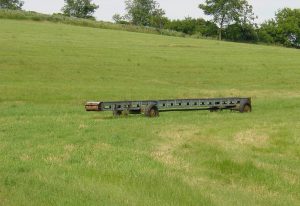
Health Details
Calves should be properly castrated, dehorned and vaccinated for the most common respiratory agents and Clostridia, and treated for internal and external parasites. Work with your veterinarian to approach the health program backwards from your expected sale or transfer dates to determine when and how the vaccines and procedures need to be completed. The goal is to accomplish all health events with minimal stress to the calves.
What exactly is a ‘stressor’? Castration, dehorning, each vaccine and animal health product, and restraint are all stressors. Plan to never stack more than three stressors on top of restraint on one day. Administering vaccines to animals under stress increases the likelihood of the animal not responding to the vaccine. Dehorning is perhaps the most stressful event due its associated pain and release of stress hormone, cortisol, which suppresses immune function. Dehorning should be performed with calves less than three months of age (per Beef Quality Assurance, BQA, guidelines) and in combination with at most only one other stressor.
For the overall health of the calf, divide the health tasks between those that should be done before weaning day and those that are done after weaning. The first pre-weaning tasks occur shortly after birth as neonatal calves are ear-tagged, navels are disinfected, bulls are castrated, and intranasal vaccinations for viral respiratory agents are given. The second set of tasks occurs one month prior to weaning. The third occurs at or after weaning.
Keep in mind, animal restraint is needed for these tasks to be accomplished. Plan for how you can restrain a neonatal calf without being challenged by the dam. Sorting pens, and a squeeze chute and head gate are the preferred facilities to have when working older calves.
Neonatal Tasks
Knife cut (open or surgical) castration is preferred, and this can be accomplished shortly after the calf is born. The risk of tetanus is minimized with open castration of small calves, making vaccination for tetanus often unnecessary. The stress from being castrated and his ability to heal the incision are supported by the nutrients and comfort he receives while nursing.
Administer an intranasal vaccine to IBR-PI3-BRSV to calves at or within 48 hours of birth. Injectable (IM or SQ) vaccines given at this young age are often blocked by maternal immunity; intranasal vaccines are not, and they are safe to use in suckling calves. (6) Our current understanding of neonatal immunity indicates that some adverse reactions may occur between three to eight days of age, so administer viral vaccines before or after this window. Depending on the product used, the duration of immunity from the intranasal vaccine will help protect the calf until the IBR-PI3-BRSV is boostered using an injectable product that also contains BVD.
Preweaning Tasks
One month prior to weaning is a good time for the calf’s first catch in a headgate. This may be completed while cows are checked for pregnancy. Calves may be dewormed for both external and internal parasites at this time. Intranasal respiratory vaccines may be boostered with an injectable viral product containing BVD and the first round of Mannheimia, Pasteurella and Histophilus may be given. When not using polled genetics, check for horns and remove them using pain management. (2,8) The calves are turned back with their dams with either the placement of ‘weaners’ or creep feeders or given access to bunks.
Following BQA guidelines, all injections should be given in the neck region injection zone, with low volume, subcutaneous (SQ) products preferred. Non-ivermectin products (due to their high rate of resistance) should be administered to treat internal parasites. (7) It is important to use a product that kills inhibited Ostertagia. Also treat for lice and grubs (grub control is subject to time of year requirements).
Weaning/Postweaning Tasks
The final respiratory boosters and Clostridia product are administered during the calf’s second and last hold in the headgate. This may be accomplished as the calf is sorted for weaning, provided that the calf is accustomed to the feedstuffs and drinking from a waterer; if not, wait until a few weeks after weaning for final vaccine administration.
In Summary
Work with your nutritionist and veterinarian to develop the preconditioning program that works on your farm and meets the expectations of the buyer of your calves. Maintain a facility that provides safety for both you and your cattle.
Authors
Sandy Stuttgen, Bill Halfman and Ryan Sterry, UW-Madison Division of Extension Agriculture Educators
References
- Ward, Heidi and Jeremy Powell. Preconditioning Programs for Beef Calves. FSA3074. University of Arkansas Division of Agriculture Research and Extension. Accessed September 15, 2020 https://www.uaex.edu/publications/pdf/FSA-3074.pdf
- Parish, Jane A, Justin D. Rhinehart, Holly T. Boland. Beef Calf Preconditioning Programs. 2578 (POD-10-07). Mississippi State University Extension. Accessed September 15, 2020 http://extension.msstate.edu/publications/publications/beef-calf-preconditioning-programs
- Barham, B.L. and T.R. Troxel. Factors Affecting the Selling Price of Feeder Cattle Sold at Arkansas Livestock Auctions in 2005. 72203. University of Arkansas, Division of Agriculture, Animal Science. Accessed September 16, 2020 https://pdfs.semanticscholar.org/f894/6c5297ca97f277901b787563c634ac16aa2c.pdf
- Gershwin LJ, et al. (2015) Single Pathogen Challenge with Agents of the Bovine Respiratory Disease Complex. PLoS ONE 10(11): e0142479. doi: 10.1371/journal.pone.0142479
- Smith, Robert A. North American Cattle Marketing and Bovine Respiratory Disease (BRD). Cambridge University Press 2009 Animal Health Research Reviews 10(2); 105–108 ISSN 1466-2523 doi:10.1017/S1466252309990107
- Griebel, P. (2015). BVDV Vaccination in North America: Risks Versus Benefits. Animal Health Research Reviews, 16(1), 27-32. doi:10.1017/S1466252315000080
- Stuttgen, Sandy and Sarah Mills-Llyod. Gastrointestinal Parasites and Cattle in Wisconsin: Understanding and Managing the Relationship (A4139) Cooperative Extension Publishing. To order, call toll-free 1-877-947-7827 or visit our website at learningstore.uwex.edu
- Stuttgen, Sandy and Jennifer Van Os. Disbudding Calves. Available upon request by email to sandra.stuttgen@wisc.edu
Download Article

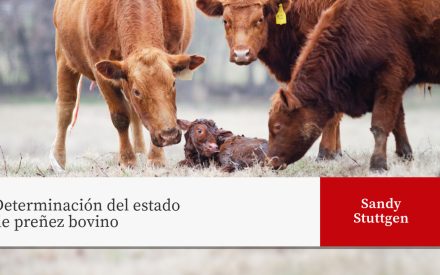 Determinación del estado de preñez bovino
Determinación del estado de preñez bovino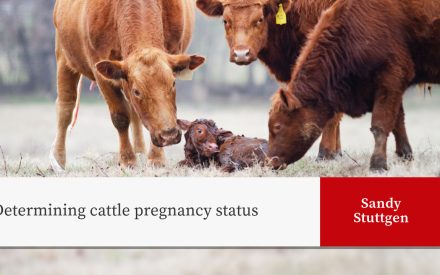 Determining cattle pregnancy status
Determining cattle pregnancy status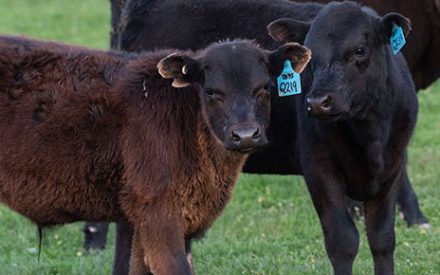 Preconditioning Tools Available
Preconditioning Tools Available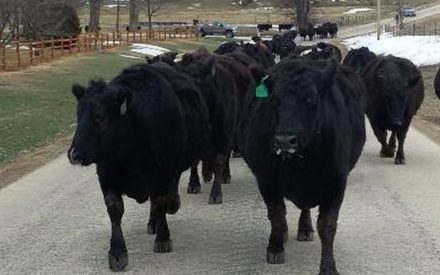 Culling Considerations for Beef Cow-Calf Herd
Culling Considerations for Beef Cow-Calf Herd


